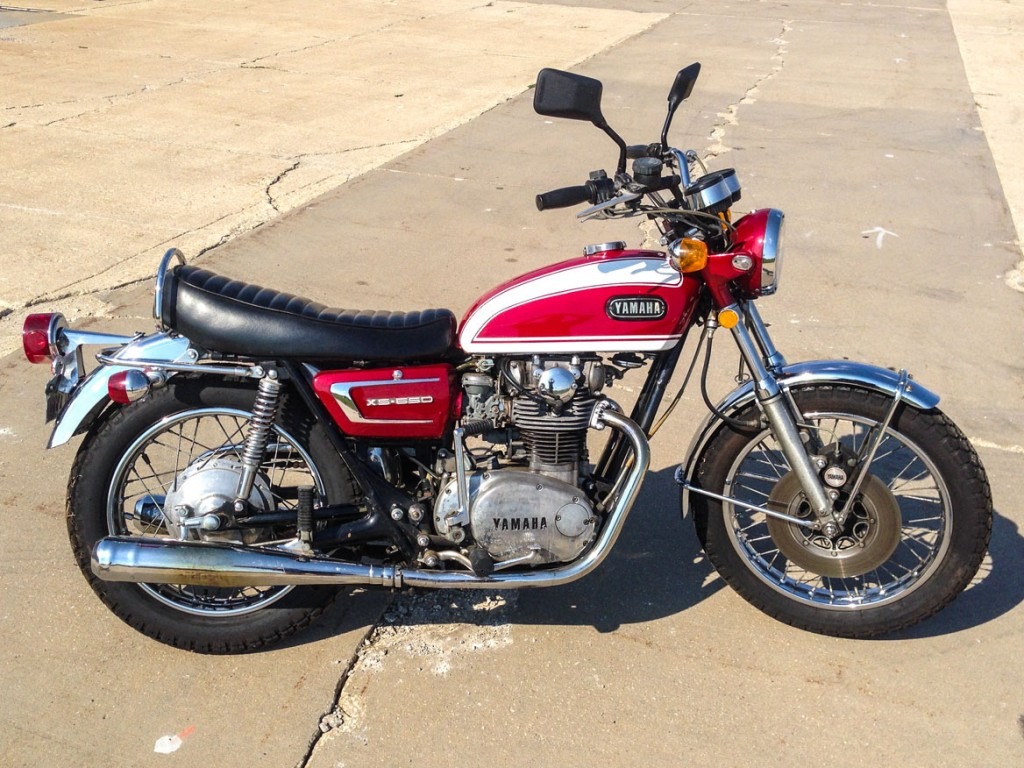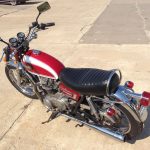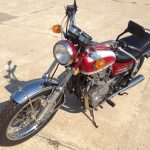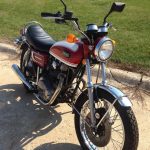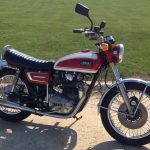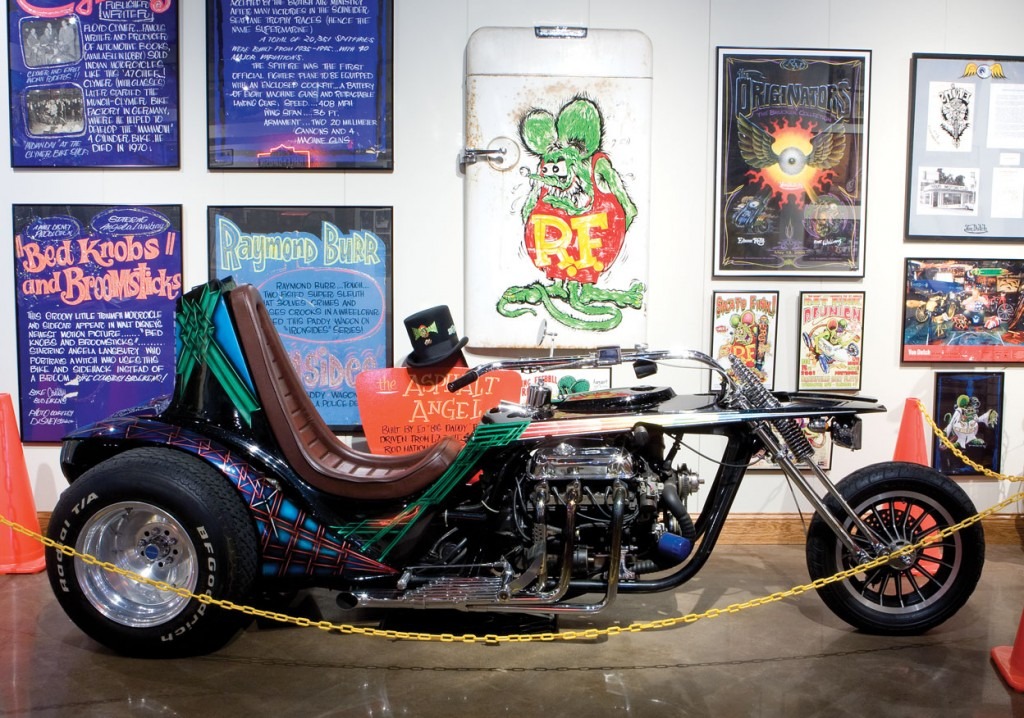Classic Yamaha 650 Donated to the National Motorcycle Museum
In the past twelve months nine motorcycles have been donated to the National Motorcycle Museum’s permanent collection. One that many of us know and grew up with is a dark red and white 1971 Yamaha XS650 donated by the Tom Watters family, natives of Anamosa, Iowa. Purchased new and kept for over 40 years, in Tom’s words, the machine still means a lot to him:
“This 1972 Yamaha was donated by Tim, Tom and Mary Ann Watters to the National Motorcycle Museum in memory of their parents George and Mary Watters of Anamosa, Iowa. Tom bought the bike in 1972 while in college at the University of Iowa and chose the 650 because he wanted a bigger, faster and more durable ride. Tom kept and rode the bike for 41 years because it reminded him of his college days and youth–some of the happiest days in his life. His motorcycle career ended in September 2013 in a near fatal motorcycle crash riding his Harley Soft Tail Classic. Based on the urging from his brother Tim for Tom to stop riding and donate the Yamaha 650 to the National Motorcycle Museum, he did so and now other people can enjoy this wonderful piece of motorcycle history.”
Tom’s Yamaha will get a good cleaning and wax job and be put on display in the Museum. It’s a classic, most would agree is based on the very successful designs of Edward Turner and his Triumph parallel twins of the late 1930’s and beyond but with disk brake and overhead cam upgrades.
*Do you have a motorcycle, or motorcycle memorabilia that that you would like to donate for display at the National Motorcycle Museum? We can tell you how motorcycle donation can benefit you. Please let us know what you may want to donate by calling 319 462 3925, or email us at museum@nationalmcmuseum.org

